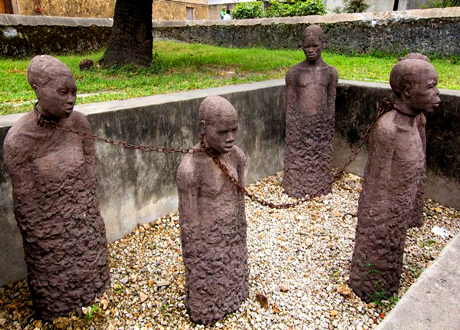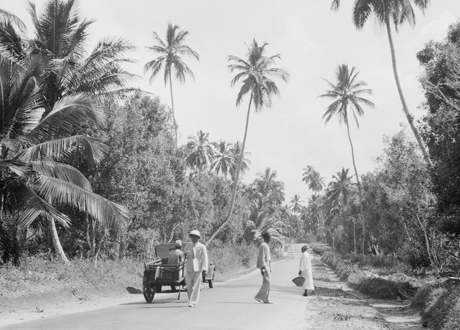Zanzibar has lured traders, adventurers, plunderers and explorers to its shores for centuries...
The Assyrians, Sumerians, Egyptians, Phoenicians, Indians, Chinese, Persians, Portuguese, Omani Arabs, Dutch and English have all been here at one time or another.
Some, particularly the Shirazi Persians and Omani Arabs, stayed to settle and rule. With this influence,
Zanzibar has become predominantly Islamic (97%) - the remaining 3% is made up of Christians, Hindus and Sikhs.
The earliest visitors to Zanzibar were Arab traders who are said to have arrived in the 8th century.
The earliest building that remains on Zanzibar is the mosque at Kizimkazi which dates from 1107, and is a present-day tourist attraction.

For centuries the Arabs sailed with the Monsoon winds from Oman to trade primarily in ivory, slaves and spices. The two main islands, Unguja (normally known as Zanzibar Island) and Pemba, provided an ideal base for the Omani Arabs, being relatively small, and therefore fairly easy to defend. From here it was possible for them to control 1,000 miles of the mainland coast from present day Mozambique to Somalia. Indeed, in 1832, Sultan Seyyid Said, of the Busaid Dynasty that had emerged in Oman, moved his Sultanate from Muscat, which was perhaps more difficult to protect, to Zanzibar where he and his descendants ruled for over 130 years. Most of the wealth lay in the hands of the Arab community, who were the main landowners, kept themselves to themselves, and generally did not intermarry with the Africans.
This was not true of the Shirazi Persians who came from the Middle East to settle on the East African coast. The story goes that in AD 975, Abi Ben Sultan Hasan of Shiraz in Persia (now Iran) had a terrible nightmare in which a rat devoured the foundations of his house. He took this as an omen that his community was to be devastated. Others in the Shiraz Court ridiculed the notion, but Sultan Hasan, his family and some followers obviously took it very seriously because they decided to migrate. They set out in seven dhows into the Indian Ocean but were caught in a huge storm and separated. Thus, landfalls were made at seven different places along the East African coast, one of which was Zanzibar, and settlements began.

Widespread intermarriage between Shirazis and Africans gave rise to a coastal community with distinctive features, and a language derived in part from Arabic,
which became known as Swahili. The name Swahili comes from the Arab word sawahil which means 'coast'.
The Zanzibar descendants of this group were not greatly involved in the lucrative slave, spice and ivory trades.
Instead, they immersed themselves mainly in agriculture and fishing. Those Shirazis that did not intermarry retained their identity as a separate group.
Two smaller communities were also established. Indian traders arrived in connection with the spice and ivory trade, and quickly settled as shopkeepers, traders,
skilled artisans, and professionals.
The British became involved in missionary and trading activities in East Africa, and attempting to suppress the slave trade centred in Zanzibar.

